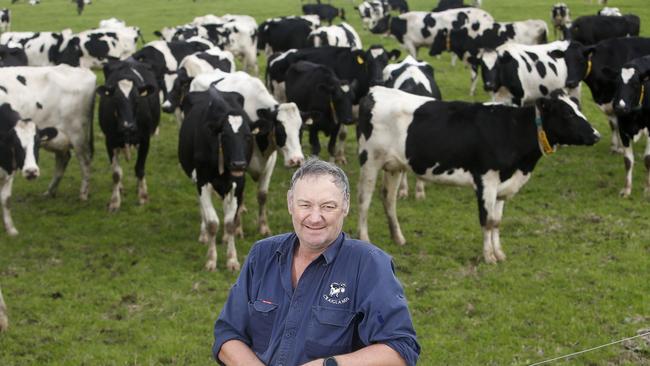Australian dairy’s margin crunch eased by stabilising fertiliser prices
Dairy farmers have enjoyed record farmgate prices, but have been hindered by input costs. In recent weeks, change is afoot. See the figures.
Margin squeeze is starting to ease for Australia’s dairy farmers after months of prohibitive input prices, particularly fertiliser.
The price of urea has been a major factor eating into record farmgate returns but international prices are now hovering near $US720 a tonne, down from a high this calendar year of $US1049 in April.
United Dairyfarmers of Victoria president Mark Billing said while fertiliser and electricity prices were still far higher than pre-pandemic levels, the settling of rampant input costs was welcome.

“People who only had a passing knowledge of dairy were saying how well things were going in June because of the record farmgate prices,” he said.
“But at that time, most farmers were also being hit with record input costs. It doesn’t mean much to have record farmgate prices when it’s being eaten into by fertiliser, power bills, labour expenses. Having said that, things appear to have settled in the past few weeks.
“Prices aren’t rising at the worrying levels we were seeing a few months back and that’s given us some confidence, although it’s early days yet.”
Southern Australia’s $10 a kilogram of milk solids ceiling was smashed by several smaller processors in June, while the big three brands — Bega, Fonterra and Saputo – were offering farmers prices close to $9.50.
Only two months earlier, processors projected Victoria and southern NSW farmgate prices would start at about $7.30 to $7.50 a kilogram of milk solids, but tightening supply forced the hand of many in the processing sector.
Meanwhile, in northern NSW and Queensland, which are both more focused on the domestic
market, tight supply has also raised prices after a tough decade.
EastAUSdairy vice chairman Graham Forbes said most farmers in those two regions would likely receive between 85c and $1 a litre this financial year.
“That’s a big change from not so long ago when you were lucky to get 55 or 60 cents,” Mr Forbes said.
“Costs weren’t being covered and dairy farmers were voting with their feet. They were getting out of dairy and into beef, mainly, where the prices were more favourable.”
Mr Billing said Victoria’s farmers were not out of the woods with wet weather in recent weeks, and forecast damp conditions this week, potentially raining on their parade.
“There’s the old saying in dairy, ‘where there’s mud, there’s money’. It’s a matter of just the right amount of mud,” he said.





